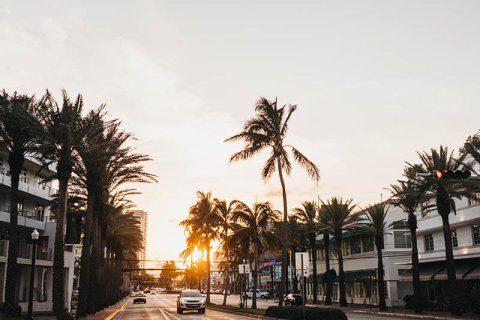
C. Brown, English teacher at a secondary school, rents a one-bedroom apartment 10 km away from her workplace in downtown Miami. This costs her $1,370 per month, i.e. about a half of her salary. She shares the only bedroom with her teenage son, but the woman is still grateful. She says people signing new rental contracts in the same residential project pay $1,500 – $1,700 per month.
When her son was small, everything was perfect, the single mother says, but now he is 14 years old and still sleeping at the top of the metal bunk bed. The room is cramped with bookshelves and storage drawers.
As Ms. Brown’s son is getting older, she feels the need to look for a new home.
According to a survey by Freddie Mac published this August, almost 60% of US tenants faced rising rentals last year. And approximately one third of them saw an increase of 10% or more.
However, only 38% received a bigger salary and 32% of those declared that the rise was not enough to cover the growing home rental. In Miami, the average household income is $44,581 per year. From July 2021 to July 2022, the rent grew by 24.61%, up to $34,092 per year.
Most local residents cannot afford to buy a home: the average asking price in Miami is $600,000. In late June, Marcia L. Fudge, US Secretary of Housing and Urban Development, called this city the epicenter of the country’s housing crisis.
Ms. Brown hopes that by next year, she will be able to find a two-bedroom apartment in Miramar, to the north from the border of Miami Dade County. Otherwise, the woman will consider moving to Florida’s west coast or to Atlanta. She hopes the teacher’s job will finally be regarded as a real profession, and teachers will see different pay rates and treatment. Otherwise, Miami will lose a lot of residents.
The current rental homes crisis has several reasons:
- The number of vacant land plots is limited in South Florida, jammed between the Atlantic Ocean and the Everglades. This shortage increases the value of the available land.
- The city has long become a popular investment destination for Latin Americans from politically unstable countries, who prefer to invest in US real estate instead of making deposits at banks at home. The recent elections in Chile and Columbia led to a new wave of buyers.
- Over the past few years, Miami has been facing an inflow of financial executives attracted by Florida’s lack of income tax, as well as people moving from other parts of the country after shifting to remote work during the pandemic.
- Construction costs and insurance rates are growing rapidly.
Masoud Shojaee, CEO at Shoma Group, a construction firm active in Miami since the 1980s, calls what’s happening in Miami “a perfect storm”. He says that developers are trying to increase the number of affordable offerings in the local market but are facing certain restrictions.
On August 1, Masoud’s company completed the construction of Shoma Village, an apartment block in the Latin American neighborhood of Hialeah. Stephanie Shojaee, Masoud’s wife and President at Shoma Group, says they really want to give something to young people to encourage them to stay in the city. The rents in Shoma Village start at $2,060 per month. The company usually lures in residents by paying brokers’ commissions and offering the tenants one month of accommodation for free. This is no longer necessary in the current market: the company actually had to hire leasing experts to handle the demand.
According to Masoud, the rent has to be set at the market rates, so that developers could get the construction of the building financed. They have to show a return. If the yield is too small, it will be very challenging to get a loan.
And even though Florida has a trust fund that is supposed to be used for building affordable residences, lawmakers took about $2 billion out of it and channeled this money to other purposes.



